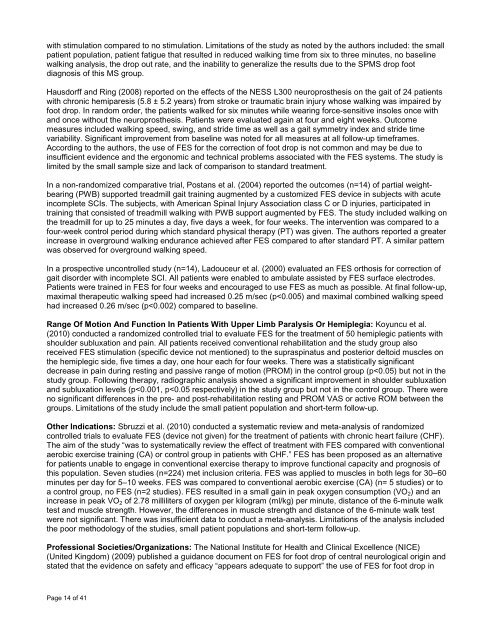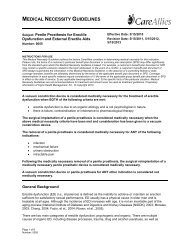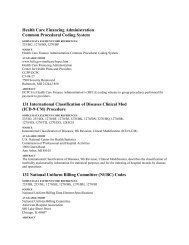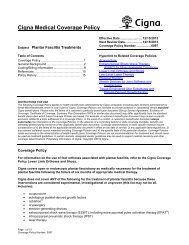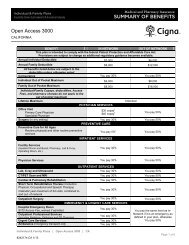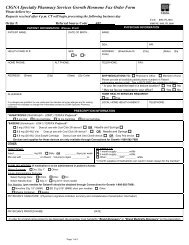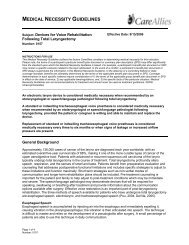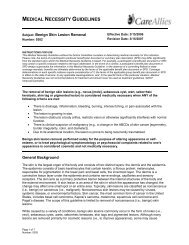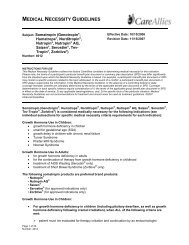Electrical Stimulators - Cigna
Electrical Stimulators - Cigna
Electrical Stimulators - Cigna
You also want an ePaper? Increase the reach of your titles
YUMPU automatically turns print PDFs into web optimized ePapers that Google loves.
with stimulation compared to no stimulation. Limitations of the study as noted by the authors included: the small<br />
patient population, patient fatigue that resulted in reduced walking time from six to three minutes, no baseline<br />
walking analysis, the drop out rate, and the inability to generalize the results due to the SPMS drop foot<br />
diagnosis of this MS group.<br />
Hausdorff and Ring (2008) reported on the effects of the NESS L300 neuroprosthesis on the gait of 24 patients<br />
with chronic hemiparesis (5.8 ± 5.2 years) from stroke or traumatic brain injury whose walking was impaired by<br />
foot drop. In random order, the patients walked for six minutes while wearing force-sensitive insoles once with<br />
and once without the neuroprosthesis. Patients were evaluated again at four and eight weeks. Outcome<br />
measures included walking speed, swing, and stride time as well as a gait symmetry index and stride time<br />
variability. Significant improvement from baseline was noted for all measures at all follow-up timeframes.<br />
According to the authors, the use of FES for the correction of foot drop is not common and may be due to<br />
insufficient evidence and the ergonomic and technical problems associated with the FES systems. The study is<br />
limited by the small sample size and lack of comparison to standard treatment.<br />
In a non-randomized comparative trial, Postans et al. (2004) reported the outcomes (n=14) of partial weightbearing<br />
(PWB) supported treadmill gait training augmented by a customized FES device in subjects with acute<br />
incomplete SCIs. The subjects, with American Spinal Injury Association class C or D injuries, participated in<br />
training that consisted of treadmill walking with PWB support augmented by FES. The study included walking on<br />
the treadmill for up to 25 minutes a day, five days a week, for four weeks. The intervention was compared to a<br />
four-week control period during which standard physical therapy (PT) was given. The authors reported a greater<br />
increase in overground walking endurance achieved after FES compared to after standard PT. A similar pattern<br />
was observed for overground walking speed.<br />
In a prospective uncontrolled study (n=14), Ladouceur et al. (2000) evaluated an FES orthosis for correction of<br />
gait disorder with incomplete SCI. All patients were enabled to ambulate assisted by FES surface electrodes.<br />
Patients were trained in FES for four weeks and encouraged to use FES as much as possible. At final follow-up,<br />
maximal therapeutic walking speed had increased 0.25 m/sec (p


